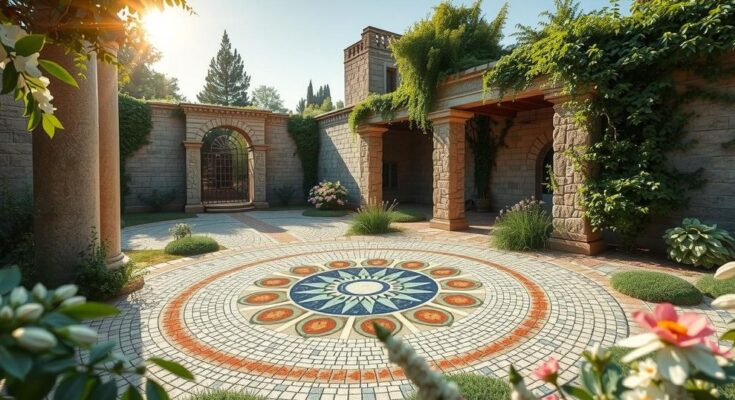In an exciting archaeological discovery, experts excavating in ancient Pergamon, near modern-day Bergama, Turkey, have uncovered a remarkable Greco-Roman residential complex known as the “Mosaic House.” This site, part of Turkey’s Heritage for the Future project, reveals the cultural richness that flourished during the Hellenistic period when Pergamon served as the capital of the Kingdom of Pergamon, thriving as a significant Greek city.
Pergamon, often hailed as a “second Athens,” was adorned with grand structures like a majestic acropolis and the esteemed Library of Pergamon, which rivalled the famous Library of Alexandria. The ancient theatre, capable of seating 10,000, further attests to the city’s cultural significance. This constructed grandeur reflected its status even post-integration into the Roman Empire.
Led by Prof. Dr. Yusuf Sezgin from Manisa Celal Bayar University, the excavation revealed a vast residential area characterised by a stunning peristyle courtyard and an ornate pool. The intricate mosaic floors of the “Mosaic House” blend Greek artistic flair with Roman influences, a testament to the high status of its former occupants. Dating back to the 2nd or 3rd century AD, the house may have met its end in the wake of a fire during 7th-century Arab raids.
The vibrant mosaics are adorned with geometric and floral designs, showcasing a fusion of Greco-Roman styles from the 3rd and 4th centuries AD. Among the treasures found is a rare intact sealed roof tile from the Hellenistic period, inscribed with the word “Basilique,” indicating the property’s royal significance—an extraordinary find in Pergamon’s archaeological history.
The discovery of the “Mosaic House” not only amplifies our understanding of Pergamon’s architectural legacy but also enriches the narrative of daily life intertwining Greek and Roman cultures. This historic revelation is a vivid reminder of the city’s ancient splendour, illuminating the lives of those who called it home.
Archaeologists have discovered the “Mosaic House,” a significant Greco-Roman residential complex in ancient Pergamon, Turkey. This site, boasting stunning mosaics and historical artefacts, reveals the intertwining of Greek and Roman cultures during the Hellenistic period. The residence, notable for its architectural elegance, dates back to the 2nd or 3rd centuries AD, before possibly being abandoned in the 7th century due to Arab raids.
The unearthing of the “Mosaic House” in Pergamon provides invaluable insight into the architectural and cultural synthesis of antiquity, showcasing the beautiful blend of Greek and Roman influences. This site enhances our appreciation of Pergamon’s role as a cultural beacon in history, reflected through its intricate mosaics and royal artefacts. Such discoveries continue to unravel the vibrant tapestry of daily life in this remarkable ancient city.
Original Source: greekcitytimes.com



